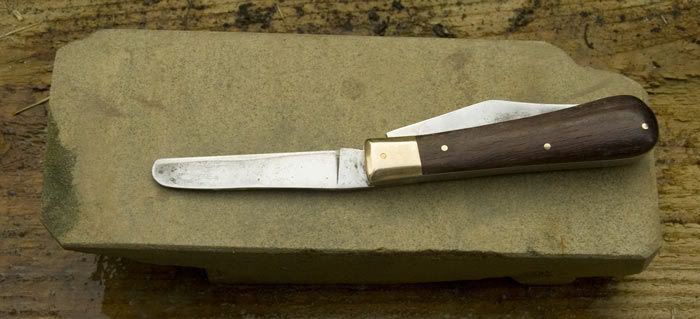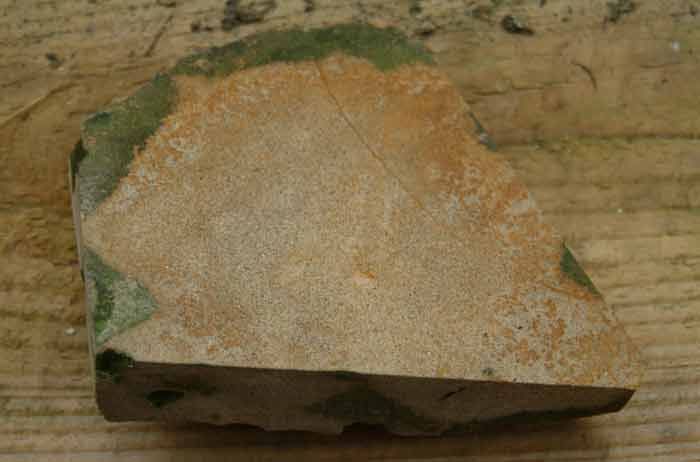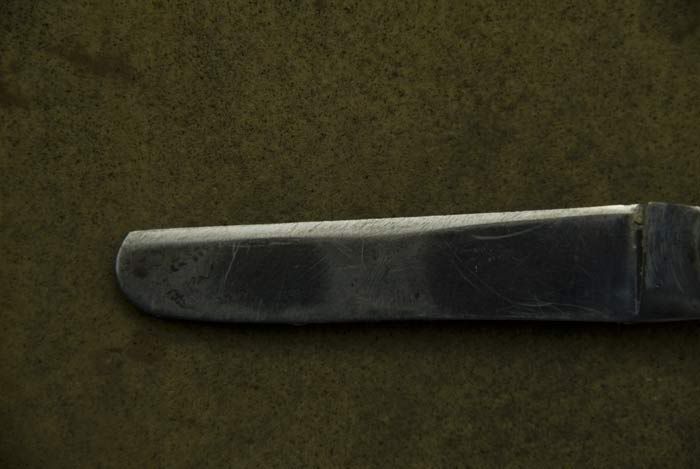I went to Blackborough the other day to find out more about the Devonshire "batt". I had better point out that the Devonshire "batt" is a scythe stone. A scythe stone is used to sharpen scythes, which need to be sharpened many times a day. The scythe was used for cutting everything, from grass, wheat, weeds and scrub.

I picked up a couple of bits of stone, how could I not. This is the biggest bit which has been shaped using an angle grinder and belt sander. This stone is 8.5 x 3.5 inches. Below is another smaller stone.


These stones are coarse, and I would only ever use them for rough honing of primary bevels. I only picked up a couple of stones and the grade of them is probably very poor. John told us that there were various grades of stones and the miners would have been selective. He also told us that because of the geology that the largest sized stone was the size of a horses head. This means that only small stones could be made, and large grindstone wheels certainly could not be manufactured.

You will see the scratch marks this stone left in the bevel of my pocket knife. I would say that the marks left are comparable to a coarse carborundum stone.
I am slowly forming a collection of natural stones, most of which are very hard and fine stones like those from Charnley Forest. These "batts" are certainly on the other end of the scale. I would also be amazed if I was to find a whole "batt" at a sale.
I would now also like to find out if there is anything in the middle of the region of a 1000grit, that was mined in the UK.
If you have a look at my blog you will find more information about this sandstone and the people who mined it

I picked up a couple of bits of stone, how could I not. This is the biggest bit which has been shaped using an angle grinder and belt sander. This stone is 8.5 x 3.5 inches. Below is another smaller stone.


These stones are coarse, and I would only ever use them for rough honing of primary bevels. I only picked up a couple of stones and the grade of them is probably very poor. John told us that there were various grades of stones and the miners would have been selective. He also told us that because of the geology that the largest sized stone was the size of a horses head. This means that only small stones could be made, and large grindstone wheels certainly could not be manufactured.

You will see the scratch marks this stone left in the bevel of my pocket knife. I would say that the marks left are comparable to a coarse carborundum stone.
I am slowly forming a collection of natural stones, most of which are very hard and fine stones like those from Charnley Forest. These "batts" are certainly on the other end of the scale. I would also be amazed if I was to find a whole "batt" at a sale.
I would now also like to find out if there is anything in the middle of the region of a 1000grit, that was mined in the UK.
If you have a look at my blog you will find more information about this sandstone and the people who mined it
